When Is the Best Time To Start A Lawn Care Programme?
14 March 2024
(Last updated: 14 Mar 2024 14:56)
Is this the year when your lawn will look better than it’s ever looked? Have you been wondering when to start your lawn care programme of renovations, feeds and treatments? Whatever you do needs to be carefully timed according to the seasons and the microclimate in your garden. Lawn care can be started at any time of the year but, the best time to start a lawn care programme is either in autumn or in spring.
When starting a lawn care programme is spring, UKLCA members generally recommend March as being the very best month to begin. In fact, March is when lawn care professionals apply what they term a T1 ‘season starter’ treatment consisting of a nutritious feed and a moss inhibitor.
Why Start A Lawn Care Programme In March?
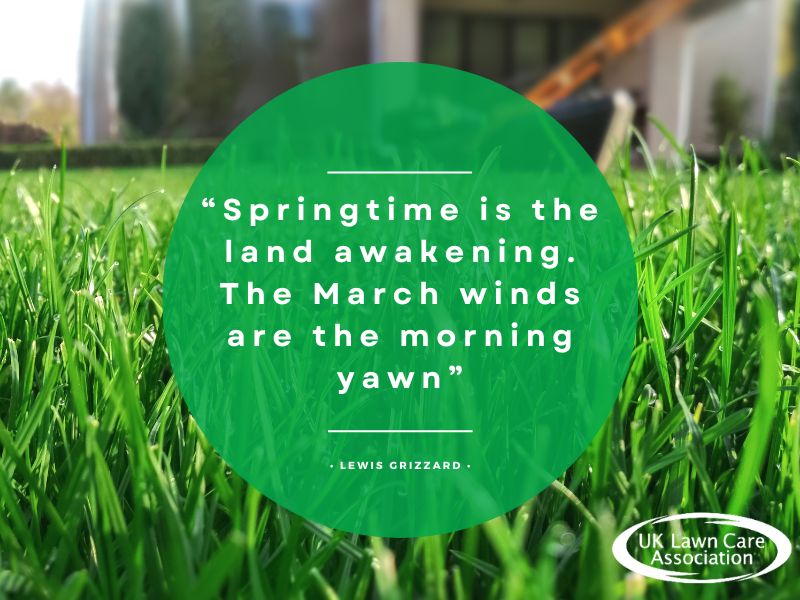 Most lawns in the UK will suffer over winter. Cold, wet soils and long dreary days deprive the grass plants of the essential ingredients they need to make strong, healthy, vibrant leaf growth. If the lawn is also in use either by humans, wildlife or pets, it will be subjected to further stress at a time of year when it cannot quickly replace damaged cells.
Most lawns in the UK will suffer over winter. Cold, wet soils and long dreary days deprive the grass plants of the essential ingredients they need to make strong, healthy, vibrant leaf growth. If the lawn is also in use either by humans, wildlife or pets, it will be subjected to further stress at a time of year when it cannot quickly replace damaged cells.
March however, brings a different kind of weather. The days gradually become longer than the nights, the soil begins to warm up and soil microbes and mini beasts become more active. All around, nature responds to the better weather. We see spring bulbs pushing through the soil and blooming. Bees come out of hibernation and the trees begin to sprout leaves and blossoms.
This then, is the ideal time of year to start your lawn care programme. When Mother Nature begins to prepare for the growing season, so should we. That all important mix of aerating, scarifying, feeding and mowing will get the grass plants in tip top condition for the summer to come.
Lawn Care Jobs For March
Scarifying:
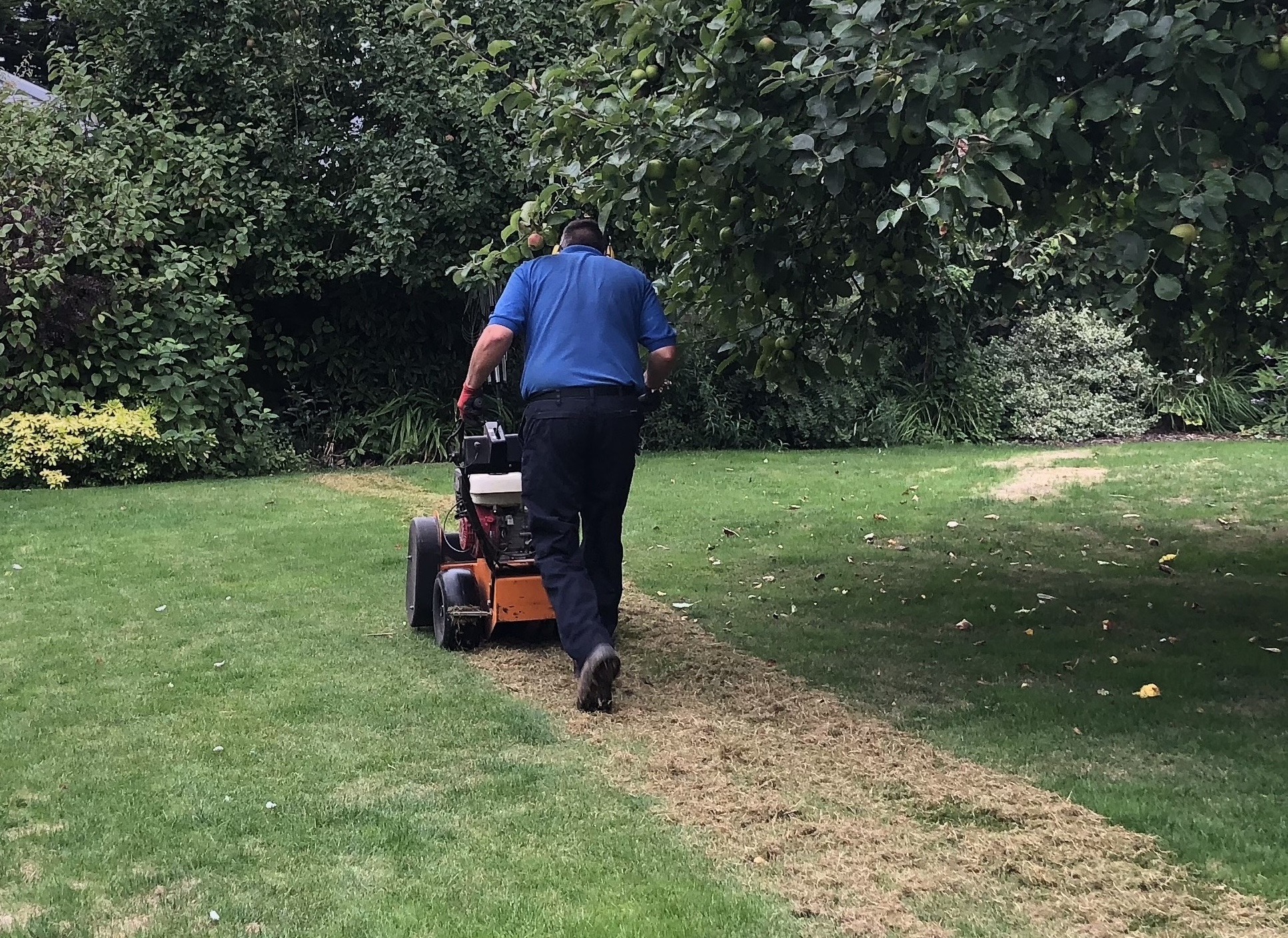 Lightly scarifying your lawn in march is like a spring clean. It gets rid of moss and debris and lets air flow around the leaves. Spores of some of our most common lawn diseases overwinter in the thatch layer and so by removing it, you will reduce the risk of attack from fusarium patch or rethread disease. A thick layer of thatch can also impede drainage and restrict summer rain from reaching the soil. After the wet winter of 2023/2024, there can’t be many lawns in the UK that have not been saturated. Click here for advice on scarifying your lawn.
Lightly scarifying your lawn in march is like a spring clean. It gets rid of moss and debris and lets air flow around the leaves. Spores of some of our most common lawn diseases overwinter in the thatch layer and so by removing it, you will reduce the risk of attack from fusarium patch or rethread disease. A thick layer of thatch can also impede drainage and restrict summer rain from reaching the soil. After the wet winter of 2023/2024, there can’t be many lawns in the UK that have not been saturated. Click here for advice on scarifying your lawn.
Aerating: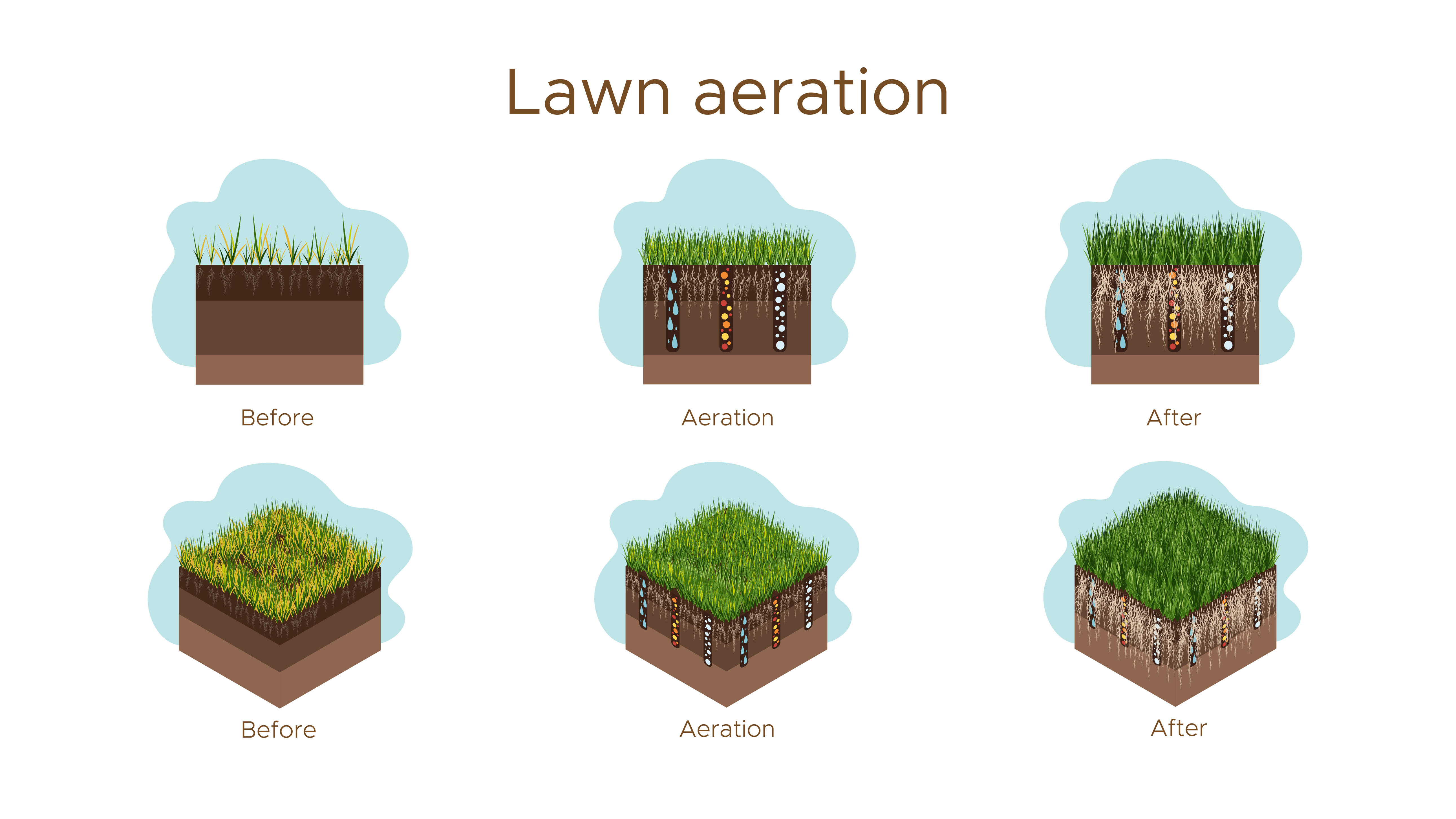
Soil compaction is quite possibly the root cause of many lawn problems. It reduces airflow around the roots, slows down drainage and makes life difficult for soil based lifeforms to function.
Grass roots need oxygen to survive. They also need plenty of room to grow. The more robust the root system beneath your lawn, the healthier and more durable your lawn will be.
Hollow tine aeration punctures the soil to create channels where air and water can flow freely. It also prunes the grass roots in the same way that you might prune roses to stimulate new growth.
If your lawn is mossy or prone to the ravages of wear and tear, aerating is one of the best things you can do for it.
Discover more about aerating your lawn here.
Moss Control:
Moss is a fascinating plant and it plays an important part in the ecology of our country. But there’s a place for everything, and for many of us, moss is not welcome in our lawns.
Moss thrives in damp conditions and because it has a very shallow root system, it’s perfectly happy on compacted lawns.
Scarifying will remove mature moss plants from your lawn but it cannot get rid of the spores that will start the next generation of moss.
Aeration will make the conditions on your lawn less attractive to moss. But if moss is a problem on your lawn, you will be wise to apply a moss treatment when you start your lawn care programme.
There are lots of proprietary moss treatments available in UK. For best value for money, Iron Sulphate offers great value for money. And it has the added bonus that the Iron will help to boost the amount of chlorophyll in your grass plants giving them a verdant green colour and helping them to harvest energy from the sun.
For best results, apply Iron sulphate AFTER scarifying. It will attack any minute pieces of moss that the may have scarifier missed.
Feeding
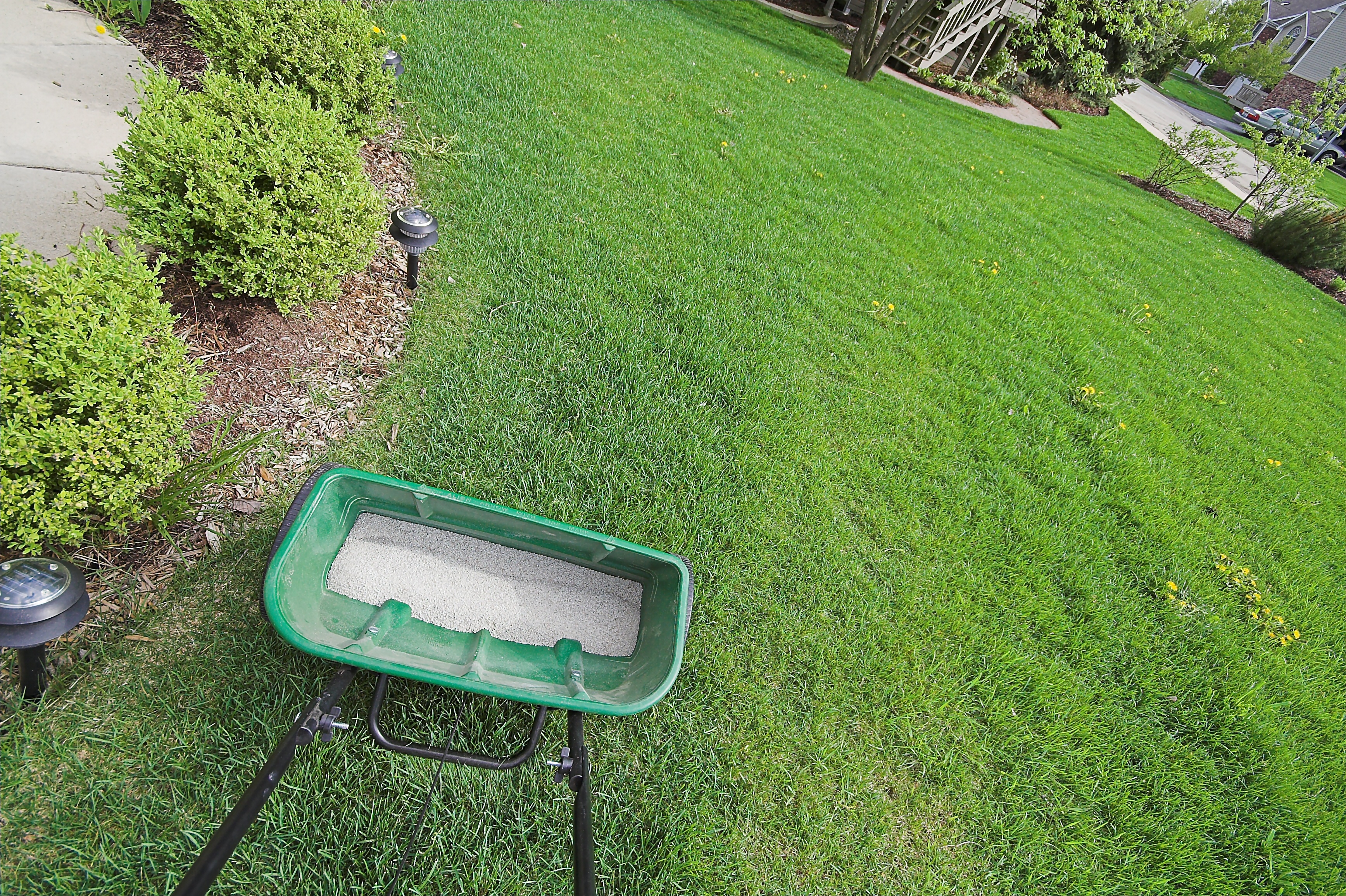 After such a wet winter, it’s highly likely that plant nutrients have been washed out of the soil leaving your lawn’s growing media depleted.
After such a wet winter, it’s highly likely that plant nutrients have been washed out of the soil leaving your lawn’s growing media depleted.
When you start a lawn care program in march, you have the ideal opportunity to feed your lawn when it needs it the most.
Early spring growth is surprisingly rapid. You may not see it with your eyes, but trust us, as the soil warms up, the roots beneath your lawn will be growing at an amazing rate as they search out the nutrients your grass needs to grow.
The number one objective for each and every grass plant is to grow tall, set seed and reproduce. Grass doesn’t care about making a beautiful lawn, we are the ones who make lawns by interrupting the growth cycle with our mowers, this is why sometimes we need to replicate nature by over-seeding the lawn to help it regenerate. Grass is doing what comes naturally and for that, it needs sufficient food.
Whether you use a liquid feed or a granular feed is a matter for personal choice. What is important is that coverage is perfectly even and that you do not apply any more than the manufacturer’s recommendation. Too much fertiliser can scorch your lawn whilst uneven application will leave it looking like an army camouflage jacket covered in blotches of different shades of green and brown.
Overseeding
If your lawn is looking very thin and the soil is clearly visible in places, then you may want to consider overseeding. Particularly where there are bare patches.
Choose your seed wisely, especially if you are repairing small areas rather than the entire lawn. A mismatch of grass varieties could lead to variations in colour and texture across your lawn.
Check the temperature of the soil before you sow your grass seed. Folklore dictates that if you can sit your bare bottom on the soil and hold it there for at least five minutes, then the ground is warm enough for seed sowing. Now, your neighbours might not be impressed if you try that at home. You might prefer to just trust your instincts instead.
Sowing grass seed into cold soil won’t damage it. It will however slow down the germination process giving a longer time frame for birds to come along and scoff all of your seed.
Overseeding just after scarifying and aeration means that there will be ready made holes in the soil that can act as mini plant pots.
Mowing
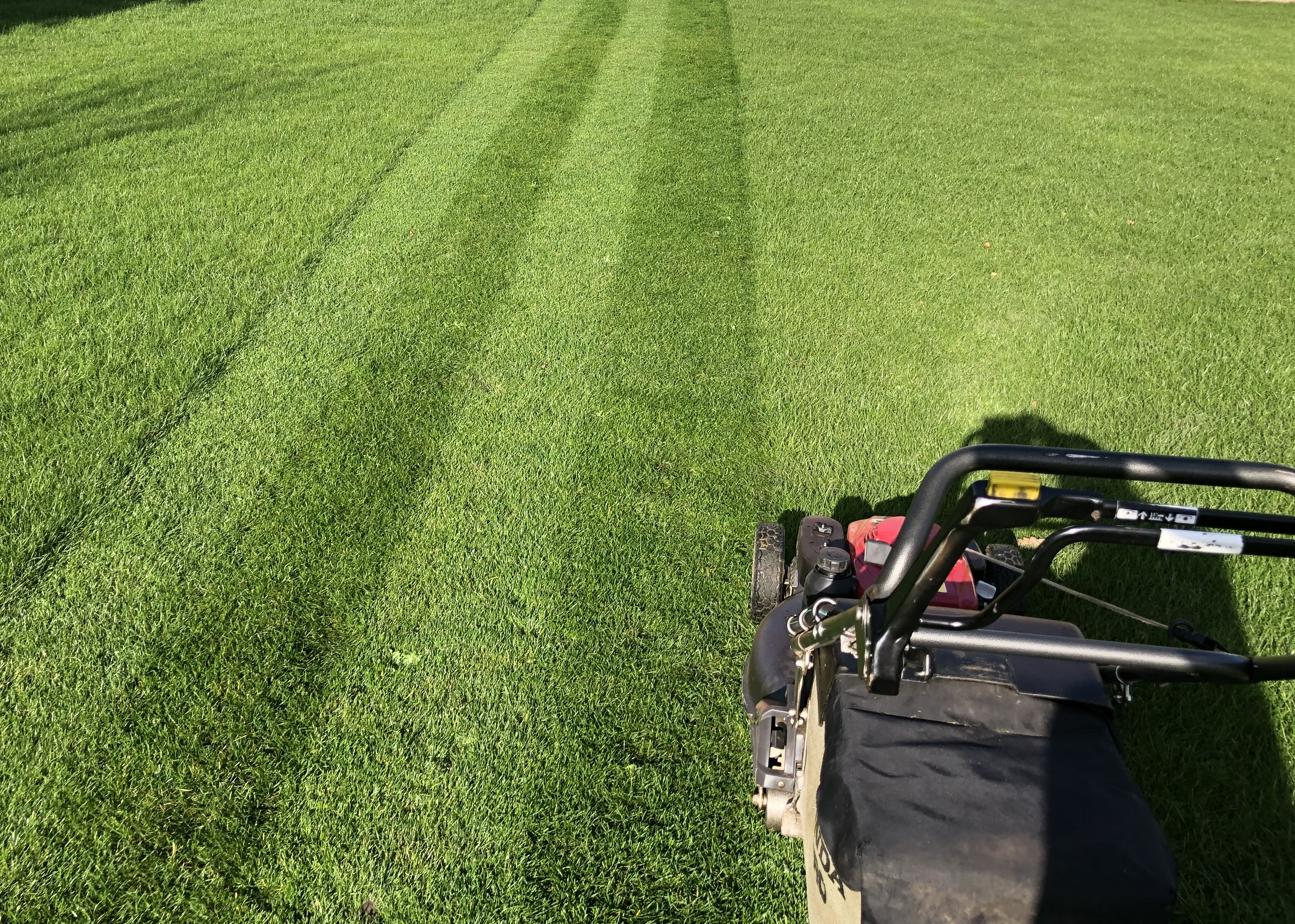 You cannot start a lawn care program without giving a lot of thought to your mowing regime. Mowing has an enormous influence on the way your lawn looks, the way it performs and its general health.
You cannot start a lawn care program without giving a lot of thought to your mowing regime. Mowing has an enormous influence on the way your lawn looks, the way it performs and its general health.
No matter what type or brand of mower you choose, one rule applies to all of them. KEEP THE BLADES SHARP AND CLEAN. Blunt lawnmower blades rip at the grass leaving ragged edges that not only look ugly, they heal slowly and can make the plants susceptible to disease.
When you start your lawn care program in March, it’s important that you don’t stress the plants by mowing too enthusiastically. It’s not too late for a sharp frost!
Be sure to set your mower blades high for the first few cuts. And never reduce the length of your lawn by more than one third at a time. For example, if you lawn is 9cm high when you start mowing, it should be no more than 6cm high when you’ve finished.
For a family lawn, 4-5 cm is a good height to aim for but it’s OK to achieve that by gradually reducing the cutting height over several mowing sessions.
Starting a lawn care program - Where to begin
Starting a lawn care program can be daunting for a beginner. You’ll be full of questions. What products should you use? What equipment will you need? How do you calibrate a fertiliser spreader? Is there a risk you could do real damage if you make a mistake?
Many of your questions can be answered by visiting the UK Lawn Care Association Facebook Page and website where you can be confident that any advice comes from accredited specialists.
But by far the easiest way, however, to start a lawn care programme is to ask for professional help. Particularly with specialist jobs such as T1 treatments, aeration, scarifying and overseeding.
UKLCA Members have access to professional grade lawn feeds and moss treatments. They also have the expertise and the equipment to apply them in the most cost effective and eco-friendly way. Plus, when you hire a UKLCA member to kick start your lawn care program, you will be supporting an independent business within your own community.
Use this link to find your nearest UKLCA member - https://www.uklawncare.net/specialist-search/
View other News